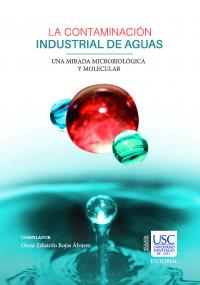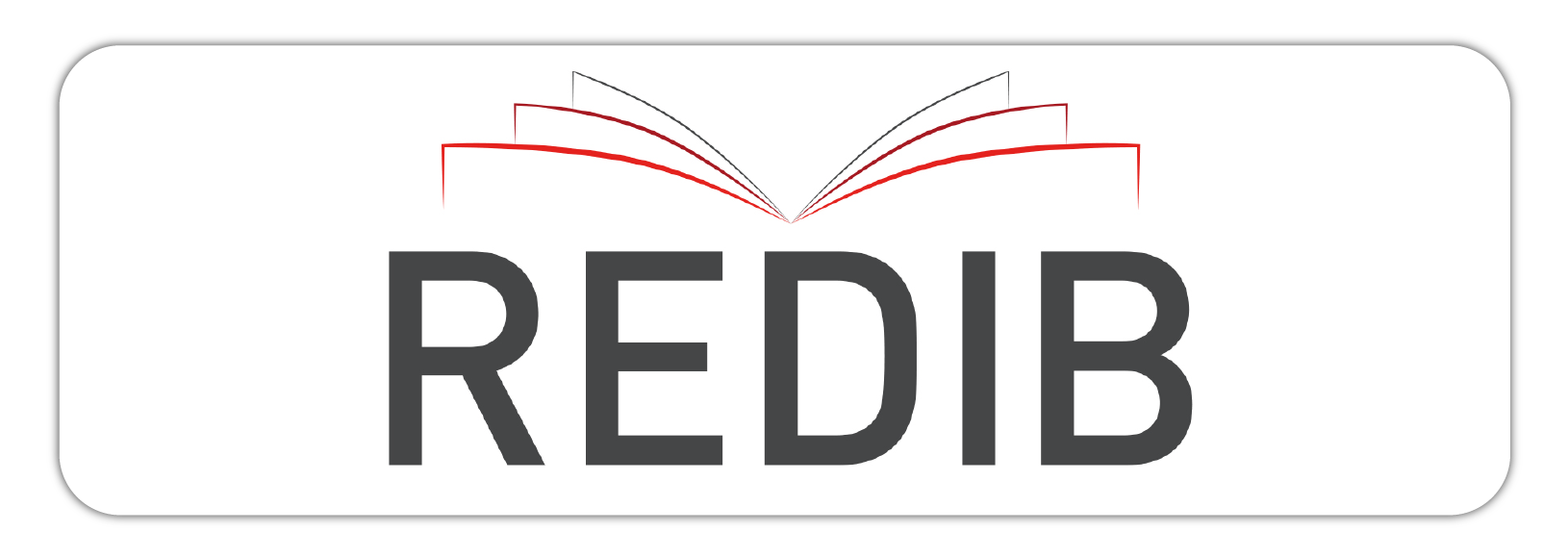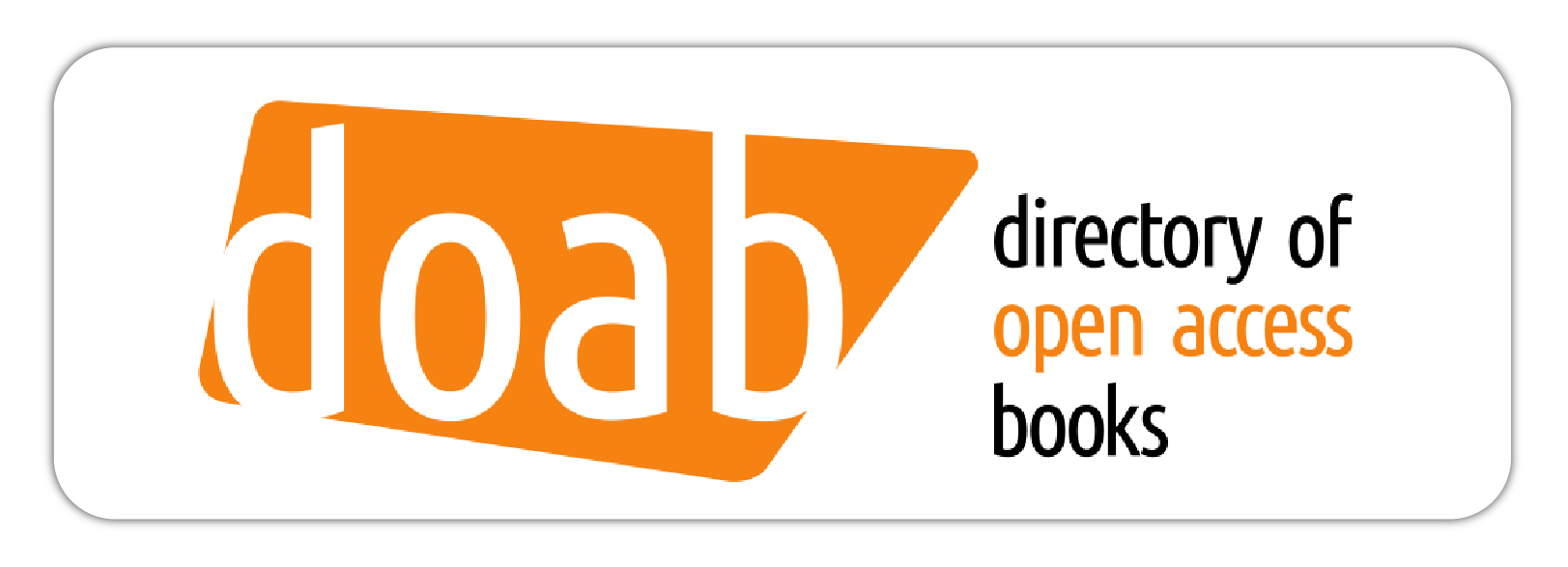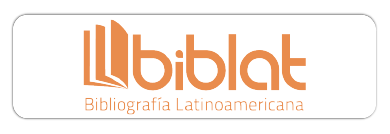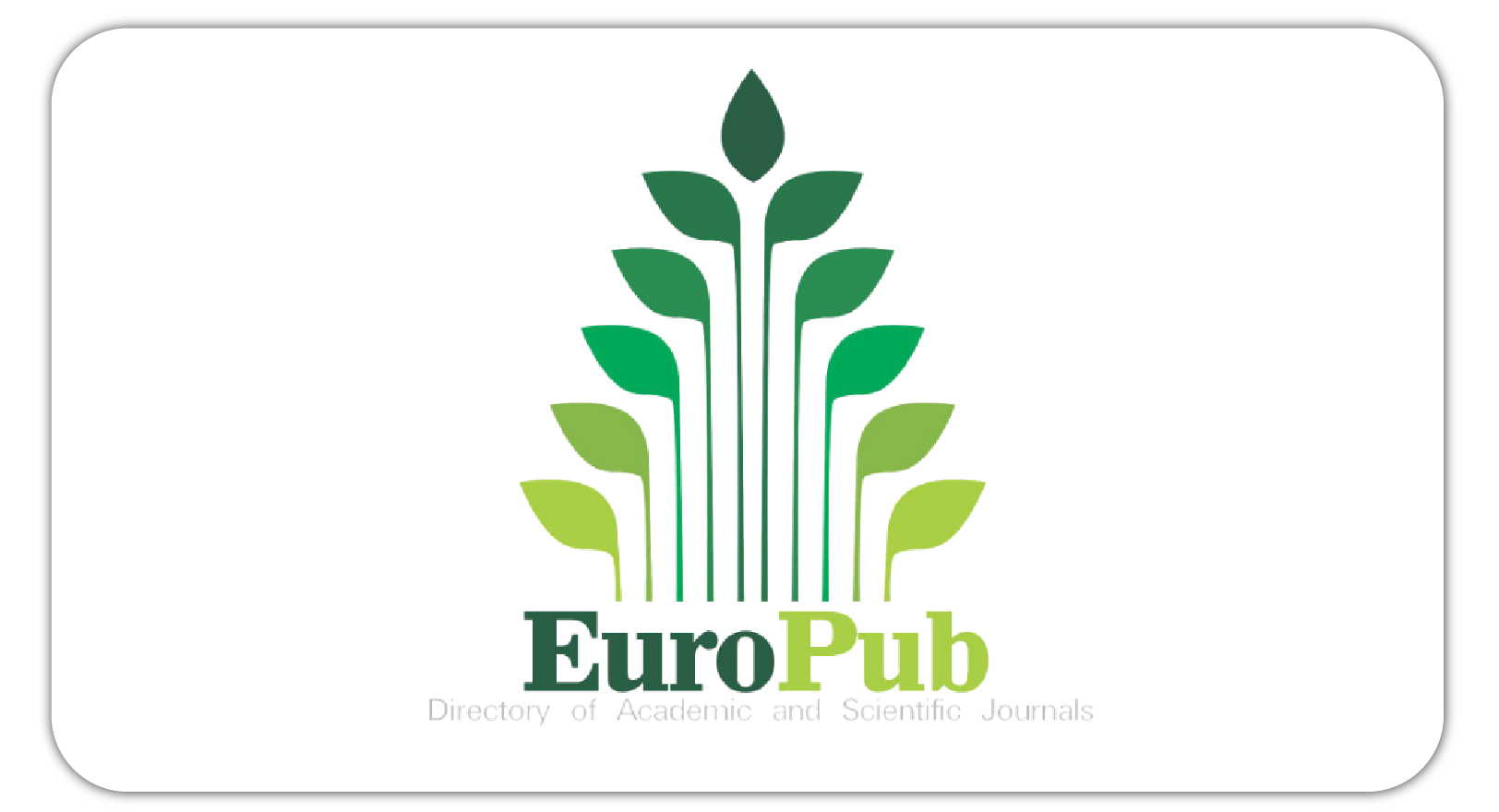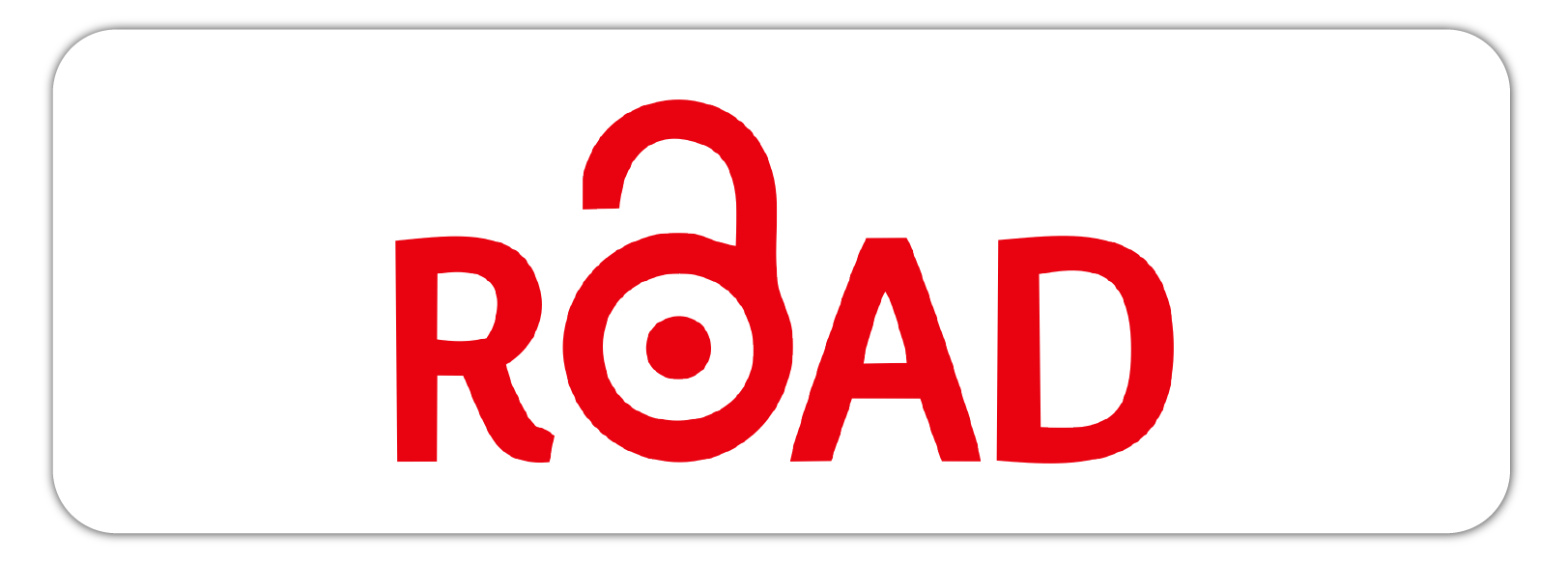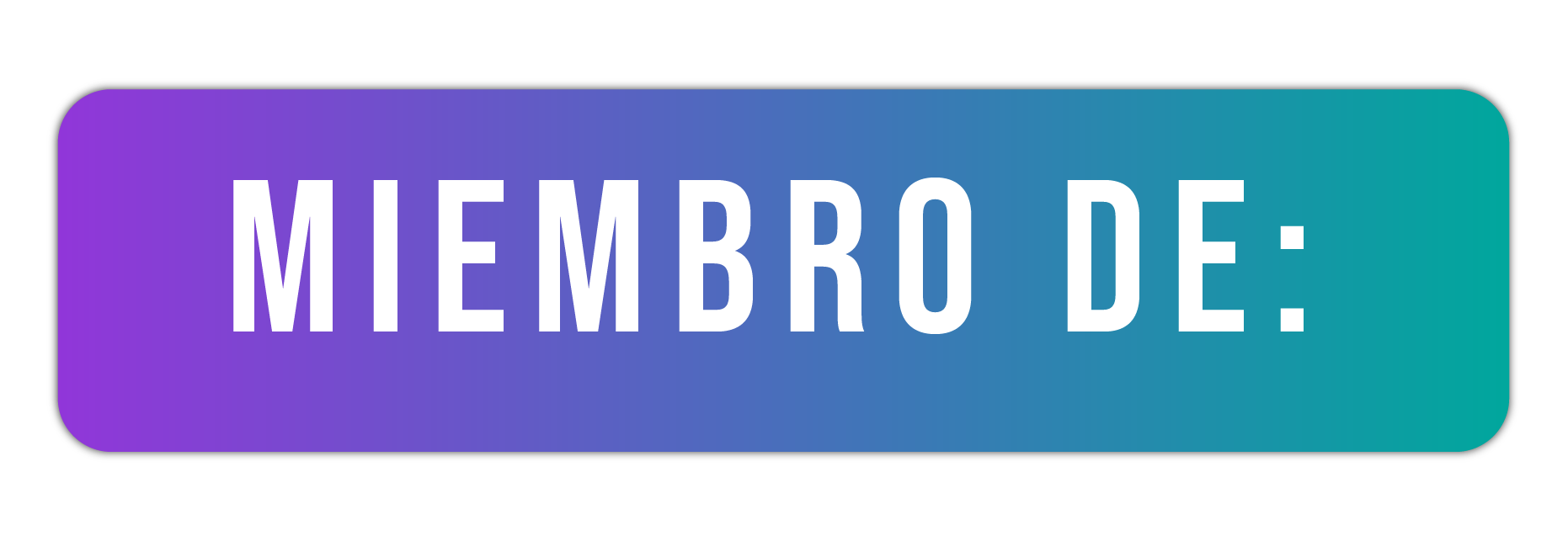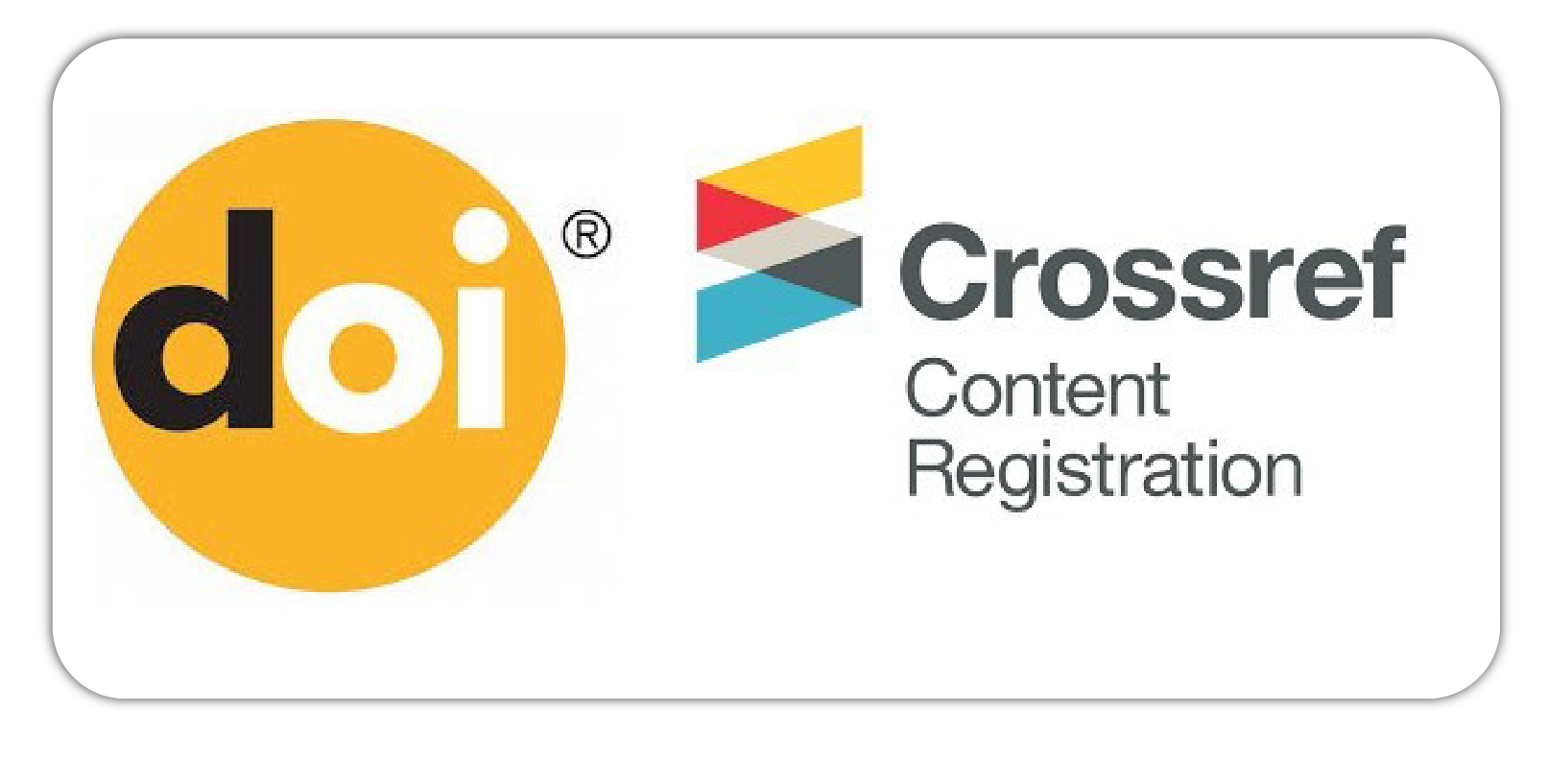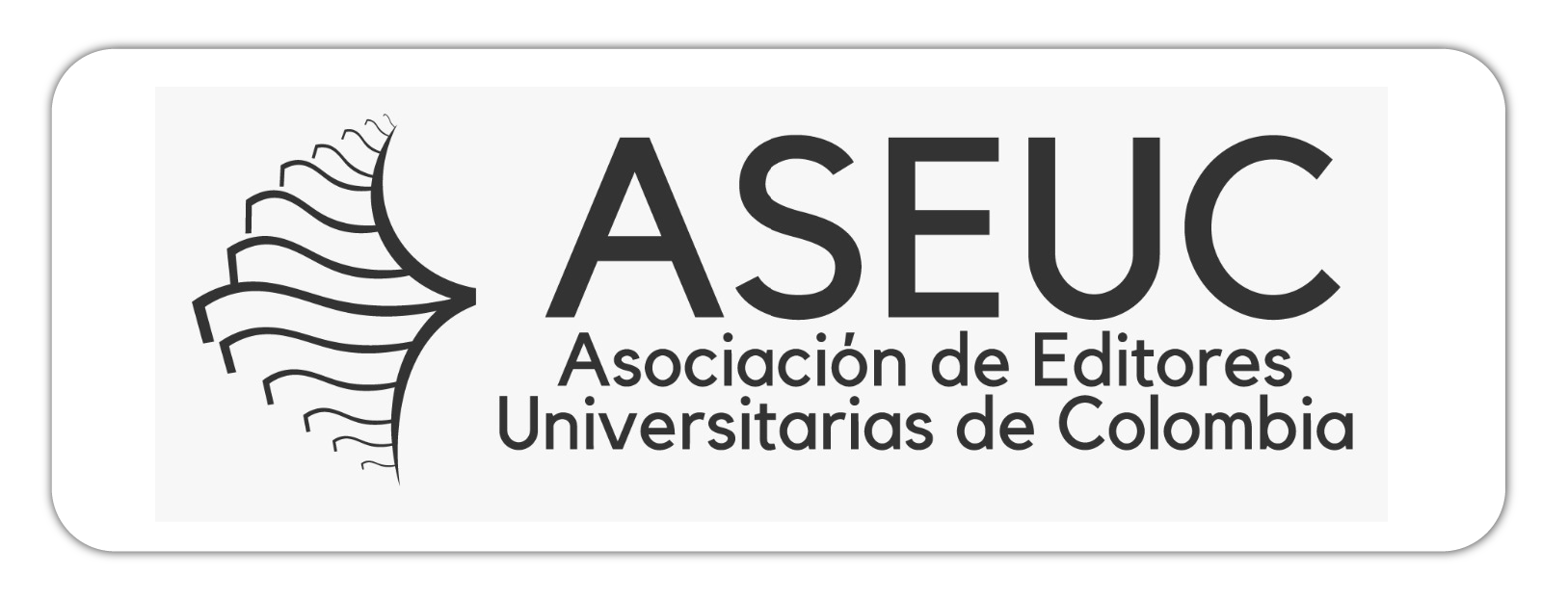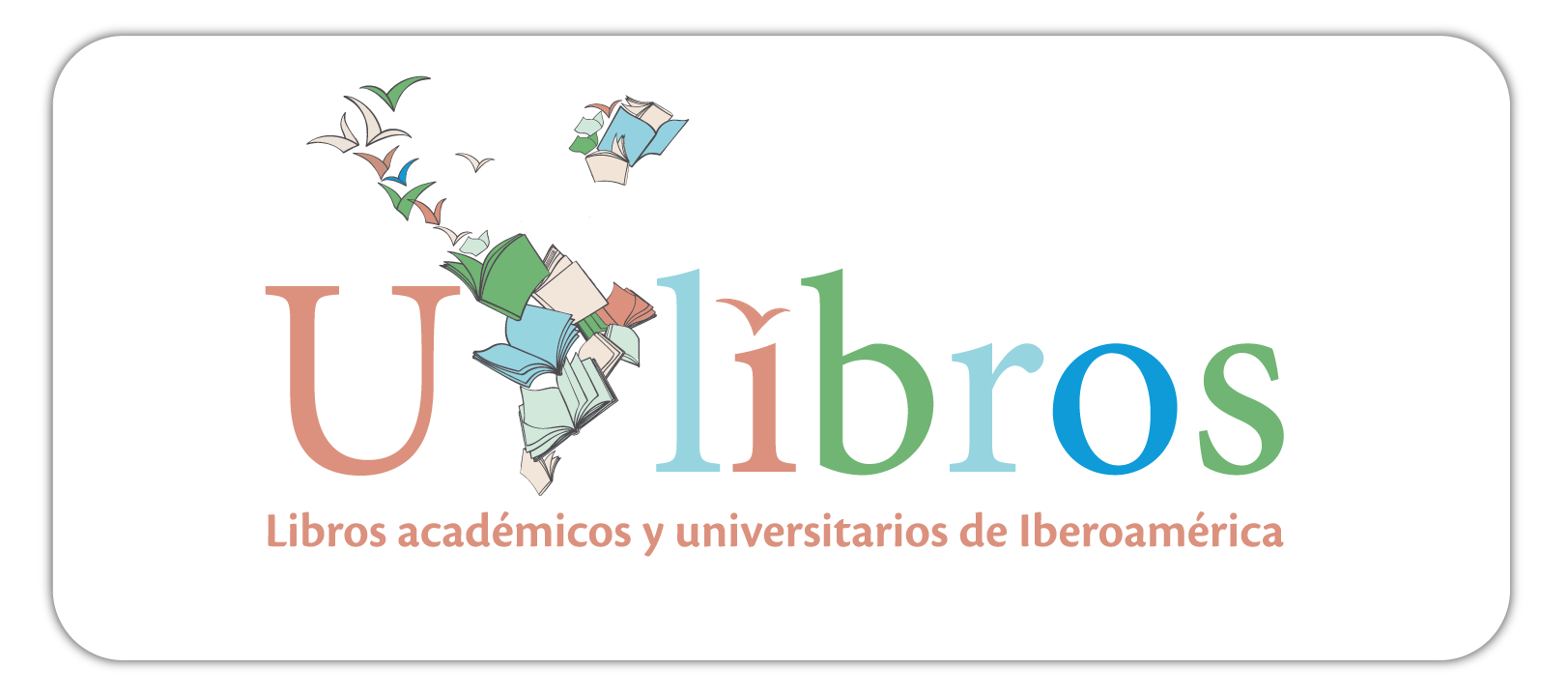La contaminación industrial de aguas: Una mirada microbiológica y molecular
PlumX
Palabras clave:
Contaminación del agua, Tratamiento del agua, Microbiología del agua, Análisis del aguaSinopsis
Los Grupos de Investigación en Química y Biotecnología (QUIBIO) y Microbiología Industrial y Medio Ambiente (GIMIA) hacen parte del Centro de Estudios e Investigaciones en Ciencias Básicas Ambientales y Desarrollo Tecnológico (CICBA), adscrito a la Facultad de Ciencias Básicas de la Universidad Santiago de Cali. Desde su nacimiento el CICBA, a propendido por estar a la vanguardia al interior de la Universidad en la investigación, conciencia por el medio ambiente y desarrollo tecnológico. Los grupos de investigación acordes con esta macrolinea, se han preocupado por aportar sus desarrollos investigativos y de innovación en un marco de responsabilidad social, es así como en este libro de investigación titulado “LA CONTAMINACIÓN INDUSTRIAL DE AGUAS: Una Mirada Microbiológica y Molecular” se recopilan 4 trabajos de investigadores pertenecientes a los dos grupos de investigación con el fin de dar a conocer estudios realizados en Colombia y Venezuela sobre la problemática de la contaminación en cuerpos acuíferos.
Capítulos
-
Capítulo 1: Mutagenicidad y gentoxicidad de aguas que surten una planta de potabilización
-
Capítulo 2: interacciones intermoleculares de la proteína de membrana Arf*GTP con potasio y glicerol, componentes mayoritarios de la vinaza de caña de azúcar
-
Capítulo 3: Caracterización de bacterias aisladas en un reservorio de agua en VenezuelaUna aproximación a la multirresistencia bacteriana en ambientes naturales
-
Capítulo 4: Validación de métodos microbiológicos para cuantificar Salmonella spp, presente en aguas tratadas con Fotofenton
Descargas
Citas
M. Muz, J. P. Dann, F. Jäger, W. Brack, and M. Krauss, "Identification of Mutagenic Aromatic Amines in River Samples with Industrial Wastewater Impact," (in eng), Environ Sci Technol, vol. 51, no. 8, pp. 4681-4688, Apr 2017.
J. M. de Castro E Sousa et al., "Cytotoxicity and genotoxicity of Guaribas river water (Piauí, Brazil), influenced by anthropogenic action," (in eng), Environ Monit Assess, vol. 189, no. 6, p. 301, Jun 2017.
Q. Zeng et al., "Evaluation of genotoxic effects caused by extracts of chlorinated drinking water using a combination of three different bioassays," (in eng), J Hazard Mater, vol. 296, pp. 23-9, Oct 2015.
X. Nie, W. Liu, L. Zhang, and Q. Liu, "Genotoxicity of drinking water treated with different disinfectants and effects of disinfection conditions detected by umu-test," (in eng), J Environ Sci (China), vol. 56, pp. 36-44, Jun 2017.
M. Muz, M. Krauss, S. Kutsarova, T. Schulze, and W. Brack, "Mutagenicity in Surface Waters: Synergistic Effects of Carboline Alkaloids and Aromatic Amines," (in eng), Environ Sci Technol, vol. 51, no. 3, pp. 1830-1839, Feb 2017.
P. J. Kerzic and R. D. Irons, "Distribution of chromosome breakpoints in benzene-exposed and unexposed AML patients," (in eng), Environ Toxicol Pharmacol, vol. 55, pp. 212-216, Oct 2017.
Y. J. Chang, C. Y. Tseng, P. Y. Lin, Y. C. Chuang, and M. W. Chao, "Acute exposure to DEHP metabolite, MEHP cause genotoxicity, mutagenesis and carcinogenicity in mammalian Chinese hamster ovary cells," (in eng), Carcinogenesis, vol. 38, no. 3, pp. 336-345, Mar 2017.
P. D. Josephy, M. Zahid, J. Dhanoa, G. B. de Souza, H. Groom, and M. Lambie, "Potent mutagenicity in the Ames test of 2-cyano-4-nitroaniline and 2,6-dicyano-4-nitroaniline, components of disperse dyes," (in eng), Environ Mol Mutagen, vol. 57, no. 1, pp. 10-6, Jan 2016.
N. Mathur, P. Bhatnagar, P. Nagar, and M. K. Bijarnia, "Mutagenicity assessment of effluents from textile/dye industries of Sanganer, Jaipur (India): a case study," (in eng), Ecotoxicol Environ Saf, vol. 61, no. 1, pp. 105-13, May 2005.
I. Briguglio et al., "Benzotriazole: An overview on its versatile biological behavior," (in eng), Eur J Med Chem, vol. 97, pp. 612-48, Jun 2015.
P. Viberg, K. G. Wahlund, and K. Skog, "On-line capillary based quantitative analysis of a heterocyclic amine in human urine," (in eng), J Chromatogr A, vol. 1133, no. 1-2, pp. 347-52, Nov 2006.
M. A. Shabbir, A. Raza, F. M. Anjum, M. R. Khan, and H. A. Suleria, "Effect of thermal treatment on meat proteins with special reference to heterocyclic aromatic amines (HAAs)," (in eng), Crit Rev Food Sci Nutr, vol. 55, no. 1, pp. 82-93, 2015.
E. M. John, M. C. Stern, R. Sinha, and J. Koo, "Meat consumption, cooking practices, meat mutagens, and risk of prostate cancer," (in eng), Nutr Cancer, vol. 63, no. 4, pp. 525-37, 2011.
N. J. Gooderham, S. Creton, S. N. Lauber, and H. Zhu, "Mechanisms of action of the carcinogenic heterocyclic amine PhIP," (in eng), Toxicol Lett, vol. 168, no. 3, pp. 269-77, Feb 2007.
M. G. Knize and J. S. Felton, "Formation and human risk of carcinogenic heterocyclic amines formed from natural precursors in meat," (in eng), Nutr Rev, vol. 63, no. 5, pp. 158-65, May 2005.
Y. Liu et al., "Particulate matter, gaseous and particulate polycyclic aromatic hydrocarbons (PAHs) in an urban traffic tunnel of China: Emission from on-road vehicles and gas-particle partitioning," (in eng), Chemosphere, vol. 134, pp. 52-9, Sep 2015.
A. Hakura et al., "Use of human liver S9 in the Ames test: assay of three procarcinogens using human S9 derived from multiple donors," (in eng), Regul Toxicol Pharmacol, vol. 37, no. 1, pp. 20-7, Feb 2003.
J. Yan, L. Wang, P. P. Fu, and H. Yu, "Photomutagenicity of 16 polycyclic aromatic hydrocarbons from the US EPA priority pollutant list," (in eng), Mutat Res, vol. 557, no. 1, pp. 99-108, Jan 2004.
S. A. Langie et al., "Causes of genome instability: the effect of low dose chemical exposures in modern society," (in eng), Carcinogenesis, vol. 36 Suppl 1, pp. S61-88, Jun 2015.
L. D. Claxton, G. e. A. Umbuzeiro, and D. M. DeMarini, "The Salmonella mutagenicity assay: the stethoscope of genetic toxicology for the 21st century," (in eng), Environ Health Perspect, vol. 118, no. 11, pp. 1515-22, Nov 2010.
"Standard methods for the examination of water and wastewater," vol. 19th ed. American Public Health Association, , ed. Washington, DC, 8/27-8/32,, 1995.
D. M. Maron and B. N. Ames, "Revised methods for the Salmonella mutagenicity test," (in eng), Mutat Res, vol. 113, no. 3-4, pp. 173-215, May 1983.
N. P. Singh, M. T. McCoy, R. R. Tice, and E. L. Schneider, "A simple technique for quantitation of low levels of DNA damage in individual cells," (in eng), Exp Cell Res, vol. 175, no. 1, pp. 184-91, Mar 1988.
A. Azqueta and A. R. Collins, "The essential comet assay: a comprehensive guide to measuring DNA damage and repair," (in eng), Arch Toxicol, vol. 87, no. 6, pp. 949-68, Jun 2013.
P. Rajaguru, L. Vidya, B. Baskarasethupathi, P. A. Kumar, M. Palanivel, and K. Kalaiselvi, "Genotoxicity evaluation of polluted ground water in human peripheral blood lymphocytes using the comet assay," (in eng), Mutat Res, vol. 517, no. 1-2, pp. 29-37, May 2002.
B. C. Manzano, M. M. Roberto, M. M. Hoshina, A. A. Menegário, and M. A. Marin-Morales, "Evaluation of the genotoxicity of waters impacted by domestic and industrial effluents of a highly industrialized region of São Paulo State, Brazil, by the comet assay in HTC cells," (in eng), Environ Sci Pollut Res Int, vol. 22, no. 2, pp. 1399-407, Jan 2015.
E. Bianchi et al., "Monitoring the Genotoxic and Cytotoxic Potential and the Presence of Pesticides and Hydrocarbons in Water of the Sinos River Basin, Southern Brazil," (in eng), Arch Environ Contam Toxicol, vol. 72, no. 3, pp. 321-334, Apr 2017.
N. J. Batista et al., "Genotoxic and mutagenic evaluation of water samples from a river under the influence of different anthropogenic activities," (in eng), Chemosphere, vol. 164, pp. 134-141, Dec 2016.
J. C. Sierra, N. Benitez, E. Bravo, A. Soto, and F. Larmat, "Evaluation of the mutagenic activity of waters collected from the cauca river in the city of Cali, Colombia by using the salmonella/microsome assay," Revista de Ciencias, Facultad de Ciencias Naturales y Exactas Universidad del Valle, vol. 16, pp. 131-143, 2012.
D. M. DeMarini, "Induction of mutation spectra by complex mixtures: approaches, problems, and possibilities," Environmental health perspectives, vol. 102, no. Suppl 4, p. 127, 1994.
A. T. Lemos, D. P. Rosa, J. A. Rocha, and V. M. Vargas, "Mutagenicity assessment in a river basin influenced by agricultural, urban and industrial sources," (in eng), Ecotoxicol Environ Saf, vol. 72, no. 8, pp. 20-65, Nov 2009.
S. Tabrez and M. Ahmad, "Mutagenicity of industrial wastewaters collected from two different stations in northern India," (in eng), J Appl Toxicol, vol. 31, no. 8, pp. 783-9, Nov 2011.
S. Tabrez and M. Ahmad, "Mutagenicity of industrial wastewaters collected from two different stations in northern India," (in eng), J Appl Toxicol, vol. 31, no. 8, pp. 783-9, Nov 2011.
D. Balabanic, M. Filipic, A. Krivograd Klemencic, and B. Zegura, "Raw and biologically treated paper mill wastewater effluents and the recipient surface waters: Cytotoxic and genotoxic activity and the presence of endocrine disrupting compounds," (in eng), Sci Total Environ, vol. 574, pp. 78-89, Jan 2017.
J. Oñate, A. Arenas, A. Ruiz, K. Rivera, and C. Peláez, "Evaluation of Mutagenic and Genotoxic Activity in Vinasses Subjected to Different Treatments," Water Air Soil Pollut, vol. 226, pp. 144-154, 2015.
V. M. Vargas et al., "Genotoxicity assessment in aquatic environments under the influence of heavy metals and organic contaminants," (in eng), Mutat Res, vol. 490, no. 2, pp. 14-58, Feb 2001.
M. A. D. Silveira, D. L. Ribeiro, G. M. Vieira, N. R. Demarco, and L. P. G. d'Arce, "Direct and Indirect Anthropogenic Contamination in Water Sources: Evaluation of Chromosomal Stability and Cytotoxicity Using the Allium cepa Test," (in eng), Bull Environ Contam Toxicol, vol. 100, no. 2, pp. 216-220, Feb 2018.
C. M. Gallampois, E. L. Schymanski, M. Krauss, N. Ulrich, M. Bataineh, and W. Brack, "Multicriteria approach to select polyaromatic river mutagen candidates," (in eng), Environ Sci Technol, vol. 49, no. 5, pp. 2959-2968, Mar 2015.
X. Wang, Z. Liu, C. Wang, Z. Ying, W. Fan, and W. Yang, "Occurrence and formation potential of nitrosamines in river water and ground water along the Songhua River, China," (in eng), J Environ Sci (China), vol. 50, pp. 65-71, Dec 2016.
M. Stiborová et al., "Cytochrome b5 increases cytochrome P450 3A4-mediated activation of anticancer drug ellipticine to 13-hydroxyellipticine whose covalent binding to DNA is elevated by sulfotransferases and N,O-acetyltransferases," (in eng), Chem Res Toxicol, vol. 25, no. 5, pp. 1075-1085, May 2012.
F. P. Guengerich, "Cytochrome p450 and chemical toxicology," (in eng), Chem Res Toxicol, vol. 21, no. 1, pp. 70-83, Jan 2008.
I. Shamovsky et al., "Explanation for main features of structure-genotoxicity relationships of aromatic amines by theoretical studies of their activation pathways in CYP1A2," (in eng), J Am Chem Soc, vol. 133, no. 40, pp. 16168-16185, Oct 2011.
W. Pfau, K. Rosenvold, and J. F. Young, "Formation of mutagenic heterocyclic aromatic amines in fried pork from Duroc and Landrace pigs upon feed supplementation with creatine monohydrate," (in eng), Food Chem Toxicol, vol. 44, no. 12, pp. 2086-91, Dec 2006.
L. Peng and R. J. Turesky, "Capturing labile sulfenamide and sulfinamide serum albumin adducts of carcinogenic arylamines by chemical oxidation," (in eng), Anal Chem, vol. 85, no. 2, pp. 1065-72, Jan 2013.
R. O. Alves de Lima, A. P. Bazo, D. M. Salvadori, C. M. Rech, D. de Palma Oliveira, and G. de Aragão Umbuzeiro, "Mutagenic and carcinogenic potential of a textile azo dye processing plant effluent that impacts a drinking water source," (in eng), Mutat Res, vol. 626, no. 1-2, pp. 53-60, Jan 2007.
G. e. A. Umbuzeiro, D. A. Roubicek, C. M. Rech, M. I. Sato, and L. D. Claxton, "Investigating the sources of the mutagenic activity found in a river using the Salmonella assay and different water extraction procedures," (in eng), Chemosphere, vol. 54, no. 11, pp. 1589-97, Mar 2004.
K. H. Kim, S. A. Jahan, E. Kabir, and R. J. Brown, "A review of airborne polycyclic aromatic hydrocarbons (PAHs) and their human health effects," (in eng), Environ Int, vol. 60, pp. 71-80, Oct 2013.
J. Li, X. Shang, Z. Zhao, R. L. Tanguay, Q. Dong, and C. Huang, "Polycyclic aromatic hydrocarbons in water, sediment, soil, and plants of the Aojiang River waterway in Wenzhou, China," (in eng), J Hazard Mater, vol. 173, no. 1-3, pp. 75-81, Jan 2010.
Zuleta M, Uribe Y, Valencia C, Vargas H, Orozco L Y, and L. C., "Contribución de la contaminación y cloración en la mutagenicidad, genotoxocidad y presencia de mutágenos en agua potable," actualidades biológicas, vol. 26, no. 81, pp. 125-136, 2004.
K. Krishnamurthi, S. S. Devi, and T. Chakrabarti, "The Genotoxicity of Priority Polycyclic Aromatic Hydrocarbons (PAHs) Containing Sludge Samples," (in eng), Toxicol Mech Methods, vol. 17, no. 1, pp. 1-12, 2007.
D. A. Bell, Levine, J.G., and D. M. DeMarini, "DNA sequence analysis of revertants of the hisD3052 allele of Salmonella typhimurium TA98 using the polymerase chain reaction and direct sequencing: Application to 1-nitropyrene-induced revertants," Mutation Research, vol. 252, pp. 23-44, 1991.
D. E. Levin, Yamasaki, E., and B. N. Ames, "A new Salmonella tester strain, TA97, for the detection of frameshift mutagens : A run of cytosines as a mutational hot-spot," Mutation Research, vol. 94, no. 2, pp. 315-330, 1982.
L. Sujbert, G. Rácz, B. Szende, H. C. Schröder, W. E. G Müller, and G. Török, "Genotoxic potential of by-products in drinking water in relation to water disinfection: survey of pre-ozonated and post-chlorinated drinking water by Ames-test," (in eng), Toxicology, vol. 219, no. 1-3, pp. 106-12, Feb 2006.
M. S. Taylor, R. W. Setzer, and D. M. DeMarini, "Examination of the additivity assumption using the spiral and standard Salmonella assays to evaluate binary combinations of mutagens," (in eng), Mutat Res, vol. 335, no. 1, pp. 1-14, Aug 1995.
F. Henkler, K. Stolpmann, and A. Luch, "Exposure to polycyclic aromatic hydrocarbons: bulky DNA adducts and cellular responses," (in eng), EXS, vol. 101, pp. 107-31, 2012.
M. Bellamri, L. Le Hegarat, L. Vernhet, G. Baffet, R. J. Turesky, and S. Langouët, "Human T lymphocytes bioactivate heterocyclic aromatic amines by forming DNA adducts," (in eng), Environ Mol Mutagen, vol. 57, no. 9, pp. 656-667, 12 2016.
L. A. Peterson, "Formation, repair, and genotoxic properties of bulky DNA adducts formed from tobacco-specific nitrosamines," (in eng), J Nucleic Acids, vol. 2010, Sep 2010.
A. R. Collins, "Measuring oxidative damage to DNA and its repair with the comet assay," (in eng), Biochim Biophys Acta, vol. 1840, no. 2, pp. 794-800, Feb 2014.
M. Kutlu, G. Aydogan, F. Susuz, and A. Ozata, "The Salmonella mutagenicity of water and sediments from the Porsuk River in Turkey," (in eng), Environ Toxicol Pharmacol, vol. 17, no. 2, pp. 111-6, Jun 2004.
N. Cedergreen, "Quantifying synergy: a systematic review of mixture toxicity studies within environmental toxicology," (in eng), PLoS One, vol. 9, no. 5, p. e96580, 2014.
P. Myllynen, T. Kurttila, L. Vaskivuo, and K. Vähäkangas, "DNA damage caused by benzo(a)pyrene in MCF-7 cells is increased by verapamil, probenecid and PSC833," (in eng), Toxicol Lett, vol. 169, no. 1, pp. 3-12, Feb 2007.
_____________________________________________________________________
Phillips, James C.; Braun, Rosemary; Wang, Wei; Gumbart, James; Tajkhorshid, Emad; Villa, Elizabeth; Chipot, Christophe; Skeel, Robert D.; Kalé, Laxmikant; Schulten, Klaus; “Scarable Molecular Dynamics with NAMD”; 2005, J. Comput. Chem., vol 26, pp. 1781-1802.
Altschul, S.F., Gish, W., Miller, W., Myers, E.W. & Lipman, D.J. "Basic local alignment search tool.", 1990, J. Mol. Biol., vol. 215, pp. 403-410. More info at https://blast.ncbi.nlm.nih.gov/Blast.cgi
Gish, W. & States, D.J. "Identification of protein coding regions by database similarity search.", 1993, Nature Genet., vol 3, pp. 266-272. More info at https://blast.ncbi.nlm.nih.gov/Blast.cgi
Zhang Z., Schwartz S., Wagner L., & Miller W., "A greedy algorithm for aligning DNA sequences", 2000, J Comput Biol 2000; vol. 7(1-2), pp. 203-14. https://blast.ncbi.nlm.nih.gov/Blast.cgi
Humphrey, W., Dalke, A. and Schulten, K., "VMD - Visual Molecular Dynamics", J. Molec. Graphics, 1996, vol. 14, pp. 33-38. More info at http://www.ks.uiuc.edu/Research/vmd/.
Hidalgo, K. Evaluación de la vinaza concentrada de destilería como aditivo en pollitas de reemplazo y gallinas ponedoras, 1920–1990. Retrieved from http://www.e-libro.com/titulos, 2012
Congreso De Colombia. . Ley 693 De Septiembre 19 De 2001, (44), 2–3. Retrieved from http://www.minminas.gov.co/documents/10180//23517//21462-3660.pdf, 2001.
Minas y Energia, M. de. Resolución 41072 30 Oct 2015 - mezcla de alcohol carburante, Colombia. Retrieved from https://www.minminas.gov.co/documents/10180//23517//36794-Resolución-41072-30Oct2015.pdf, 2015.
Bermúdez, I. P., & Garrido, N. Aprovechamiento integral de vinazas de destilerías Una revisión actual. Ingeniería Química, 129–133. 2006.
ANDI, & FENALCO. . Informe Del Sector Automotor. Retrieved from http://web.econometria.com.co/images/Vehiculos/Avance_Abr_2015.pdf, 2015.
Tecnicaña. Capacitación Técnica para la Agroindustria. Revista Tecnicaña, (28), 34., 2012
Irisarri, D. Usos Industriales y Agrícolas de la Vinaza de Caña de Azúcar, (Las Vinazas), 20–25, 1996.
MacKerell, A.D., Jr,. Feig, M., Brooks, C.L., III, Extending the treatment of backbone energetics in protein force fields: limitations of gas-phase quantum mechanics in reproducing protein conformational distributions in molecular dynamics simulations, Journal of Computational Chemistry, 25: 1400-1415, 2004.
MacKerell, Jr., A. D.; Bashford, D.; Bellott, M.; Dunbrack Jr., R.L.; Evanseck, J.D.; Field, M.J.; Fischer, S.; Gao, J.; Guo, H.; Ha, S.; Joseph-McCarthy, D.; Kuchnir, L.; Kuczera, K.; Lau, F.T.K.; Mattos, C.; Michnick, S.; Ngo, T.; Nguyen, D.T.; Prodhom, B.; Reiher, III, W.E.; Roux, B.; Schlenkrich, M.; Smith, J.C.; Stote, R.; Straub, J.; Watanabe, M.; Wiorkiewicz-Kuczera, J.; Yin, D.; Karplus, M. All-atom empirical potential for molecular modeling and dynamics Studies of proteins. Journal of Physical Chemistry B, 1998, 102, 3586-3616.
Guvench, O., Mallajosyula, S.S. Raman, E.P., Hatcher, E. Vanommeslaeghe, K., Foster, T.J., Jamison II, F.W., and MacKerell, A.D., Jr. "CHARMM additive all-atom force field for carbohydrate derivatives and their utility in polysaccharide and carbohydrate-protein modeling," Journal of Chemical Theory and Computing, 7: 3162-3180, 2011, [DOI], PMC3224046
Mallajosyula, S.S., Guvench, O., Hatcher, E., MacKerell, A.D., Jr., "CHARMM Additive All-Atom Force Field for Phosphate and Sulfate Linked to Carbohydrates," Journal of Chemical Theory and Computation, 8: 759-776, 2012, [DOI], PMC3367516
Raman, P. Guvench, O. MacKerell, Jr. A.D. "CHARMM Additive All-Atom Force Field for Glycosidic Linkages in Carbohydrates Involving Furanoses," Journal of Physical Chemistry B 114: 12981-12994, 2010, [DOI], PMC2958709
Guvench, O. Hatcher, E.R. Venable, R.M. Pastor, R.W. and MacKerell Jr., A.D. "Additive Empirical CHARMM Force Field for glycosyl linked hexopyranoses," Journal of Chemical Theory and Computation 5: 2353-2370, 2009, [DOI], PMC2757763
Cross, S. Kuttel, M. Stone, J. Gain, J. Visualization of cyclic and multi-branched molecules with VMD, In Journal of Molecular Graphics and Modelling, Volume 28, Issue 2, 2009, Pages 131-139, ISSN 1093-3263, https://doi.org/10.1016/j.jmgm.2009.04.010.
Bondi, A. (1964). "Van der Waals Volumes and Radii". J. Phys. Chem. 68 (3): 441–451. doi:10.1021/j100785a001
Yizhou, L., Kahn, Richard A., Prestegard, James H., “Dynamic Structure of membrane-anchored Arf*GTP”, 2010, Nat.Struct.Mol.Biol., vol 17. pp. 876-881. More info at DOI: 10.1038/nsmb.1853
Abdallah, M., Khelissa, O., Ibrahim, A., Benoliel, C., Heliot, L., Dhulster, P., & Chihib, N. (2015). International Journal of Food Microbiology Impact of growth temperature and surface type on the resistance of Pseudomonas aeruginosa and Staphylococcus aureus bio films to disinfectants. International Journal of Food Microbiology, 214, 38–47. http://doi.org/10.1016/j.ijfoodmicro.2015.07.02
Alves, P. R. L., Natal-da-Luz, T., Sousa, J. P., & Cardoso, E. J. B. N. 2015. Ecotoxicological characterization of sugarcane vinasses when applied to tropical soils. Science of The Total Environment, 526, 222–232. http://doi.org/10.1016/j.scitotenv.2015.03.150
Bandala, E. R., Gelover, S., Teresa, M., Arancibia-bulnes, C., Jimenez, A., & Estrada, C. A. 2002. Solar photocatalytic degradation of Aldrin, 76, 189–199.
Bock, L. J., Wand, M. E., & Sutton, J. M. 2016. Varying activity of chlorhexidine-based disinfectants against Klebsiella pneumoniae clinical isolates and adapted strains. Journal of Hospital Infection, 93(1), 42–48. http://doi.org/10.1016/j.jhin.2015.12.019
Campos, C. R., Mesquita, V. A., Silva, C. F., & Schwan, R. F. 2014. Efficiency of physicochemical and biological treatments of vinasse and their influence on indigenous microbiota for disposal into the environment. Waste Management, 34(11), 2036–2046. http://doi.org/10.1016/j.wasman.2014.06.006
Chamakura, K., Perez-ballestero, R., Luo, Z., Bashir, S., & Liu, J. 2011. Biointerfaces Comparison of bactericidal activities of silver nanoparticles with common chemical disinfectants. Colloids and Surfaces B: Biointerfaces, 84(1), 88–96. http://doi.org/10.1016/j.colsurfb.2010.12.020
Chang, C. T., Colicino, E. G., Dipaola, E. J., Al-hasnawi, H. J., & Whipps, C. M. (2015). Comparative Biochemistry and Physiology , Part C Evaluating the effectiveness of common disinfectants at preventing the propagation of Mycobacterium spp . isolated from zebra fish. Comparative Biochemistry and Physiology, Part C, 178, 45–50. http://doi.org/10.1016/j.cbpc.2015.09.008
Chioma, A., Chaudhuri, M., Rahman, S., & Kutty, M. 2014. UV Fenton and sequencing batch reactor treatment of chlorpyrifos , cypermethrin and chlorothalonil pesticide wastewater. International Biodeterioration & Biodegradation, 93, 195–201. http://doi.org/10.1016/j.ibiod.2014.06.002
Christofoletti, C. A., Escher, J. P., Correia, J. E., Marinho, J. F. U., & Fontanetti, C. S. (2013). Sugarcane vinasse: Environmental implications of its use. Waste Management, 33(12), 2752–2761. http://doi.org/10.1016/j.wasman.2013.09.005
Gomez, J. M. (Universidad C. O. L. A. 2009. Efecto de la aplicación de vinaza en la producción y calidad de la caña de azúcar.
Gutiérrez-martín, C. B., Yubero, S., Martínez, S., Frandoloso, R., & Rodríguez-ferri, E. F. (2011). Research in Veterinary Science Evaluation of efficacy of several disinfectants against Campylobacter jejuni strains by a suspension test, 91, 44–47. http://doi.org/10.1016/j.rvsc.2011.01.020
Ha, J., Choi, C., Lee, H., Ju, I., Lee, J., & Ha, S. 2016. Efficacy of chemical disinfectant compounds against human norovirus. Food Control, 59, 524–529. http://doi.org/10.1016/j.foodcont.2015.04.040
Hong, H., Forbes, D., Rn, M., Sandora, T. J., & Priebe, G. P. 2013. American Journal of Infection Control Disinfection of needleless connectors with chlorhexidine-alcohol provides long-lasting residual disinfectant activity. American Journal of Infection Control, 41(8), e77–e79. http://doi.org/10.1016/j.ajic.2012.10.018
Korndörfer, G. H., Nolla, A., & Ailton, G. (n.d.). Manejo, aplicación y valor fertilizante de la vinaza para caña de azúcar y otros cultivos. Control, 23–28.
Kusvuran, E., & Erbatur, O. 2004. Degradation of aldrin in adsorbed system using advanced oxidation processes. Comparison of the treatment methods, 115–125.
Kusvuran, E., Gulnaz, O., Irmak, S., Atanur, O. M., Yavuz, H. I., & Erbatur, O. (2004). Comparison of several advanced oxidation processes for the decolorization of Reactive Red 120 azo dye in aqueous solution, 109, 85–93. http://doi.org/10.1016/j.jhazmat.2004.03.009
Lazaro, Y. (UNAH)., & Castro, I. (UNAH). 2014. Efecto de la aplicación de vinaza sobre algunos indicadores físicos de un suelo Pardo Sialítico carbonatado cultivado con tomate ( Solanum lycopersicum L ) cv . Amalia Effect of vinasse application on some soil physical indicators Pardo sialítico carbonat, 4(4), 24–29.
Liu, Y., Kahn, R. A., & Prestegard, J. H. 2010. Dynamic structure of membrane-anchored Arf*GTP. Nature Structural & Molecular Biology, 17(7), 876–881. http://doi.org/10.1038/nsmb.1853
Moraes, B. S., Junqueira, T. L., Pavanello, L. G., Cavalett, O., Mantelatto, P. E., Bonomi, A., & Zaiat, M. (2014). Anaerobic digestion of vinasse from sugarcane biorefineries in Brazil from energy, environmental, and economic perspectives: Profit or expense? Applied Energy, 113, 825–835. http://doi.org/10.1016/j.apenergy.2013.07.018
Oosterik, L. H., Tuntufye, H. N., Butaye, P., & Goddeeris, B. M. 2014. Effect of serogroup , surface material and disinfectant on biofilm formation by avian pathogenic Escherichia coli. The Veterinary Journal, 202(3), 561–565. http://doi.org/10.1016/j.tvjl.2014.10.001
Perumal, P. K., Wand, M. E., Sutton, J. M., & Bock, L. J. 2014. Evaluation of the effectiveness of hydrogen-peroxide-based disinfectants on biofilms formed by Gram-negative pathogens. Journal of Hospital Infection, 87(4), 227–233. http://doi.org/10.1016/j.jhin.2014.05.004
Pesticide Research Institute. 2013. Vinasse Technical Evaluation Report.
Portuguez, R. A., & Chinchilla, R. O. 2007. Cambios Físico-Químicos provocados por la Vinaza en un Suelo Vertisol en Costa Rica Introducción Objetivos Materiales y Métodos.
Pozo, C., Gã, M. A., Calvo, C., & Gonzã, J. 2002. Studies on the e ects of the insecticide aldrin on aquatic microbial populations, 50, 83–87.
Rajdev, S., Mulla, S., & Kumar, A. (n.d.). Development of an indigenous automated surveillance system in India: Its impact on device associated infections at a trauma center, 3, 50–51.
Santos, M., Diánez, F., de Cara, M., & Tello, J. C. 2008. Possibilities of the use of vinasses in the control of fungi phytopathogens. Bioresource Technology, 99(18), 9040–9043. http://doi.org/10.1016/j.biortech.2008.04.032
Santos, M., Carretero, F., & Cara, M. De. 2009. Efecto de la aplicación de vinaza de vino como biofertilizante y en el control de enfermedades en el cultivo de pepino, 58–66.
Scull, I., Savón, L., Gutiérrez, O., Valiño, E., Orta, I., Mora, P. O., … Noda, A. 2012. Physic-chemical composition of concentrated vinasse for their assessment in animal diets, 46(4), 385–389.
Yamanaka, T., Bannai, H., Dvm, K. T., Dvm, M. N., Dvm, T. K., & Dvm, T. M. (2014). Journal of Equine Veterinary Science Comparison of the Virucidal Effects of Disinfectant Agents Against Equine In fluenza A Virus. Journal of Equine Veterinary Science, 34(5), 715–718. http://doi.org/10.1016/j.jevs.2013.12.010
MacKerell AD Jr, Bashford D, Bellott M, Dunbrack RL Jr, Evanseck J, Field MJ, Fischer S, Gao J, Guo H, Ha S, Joseph D, Kuchnir L, Kuczera K, Lau FTK, Mattos C, Michnick S, Ngo T, Nguyen DT.
MacKerell AD1, Bashford D, Bellott M, Dunbrack RL, Evanseck JD, Field MJ, Fischer S, Gao J, Guo H, Ha S, Joseph-McCarthy D, Kuchnir L, Kuczera K, Lau FT, Mattos C, Michnick S, Ngo T, Nguyen DT, Prodhom B, Reiher WE, Roux B, Schlenkrich M, Smith JC, Stote R, Straub J, Watanabe M, Wiórkiewicz-Kuczera J, Yin D, Karplus M, All-atom empirical potential for molecular modeling and dynamics studies of proteins, J Phys Chem B. 1998 Apr 30;102(18):3586-616. doi: 10.1021/jp973084f.
Weiner SP, Kollman PA, Case DA, Singh UC, Ghio C, Alagona G, Profeta J, Weiner P. A new force field for molecular mechanical simulation of nucleic acids and proteins. J Am Chem Soc 1984;106:765–784.
Berendsen HJC, van der Spoel D, van Drunen R. GROMACS: A message passing parallel molecular dynamics implementation. Comput Phys Commun 1995;91:43–56.
Lourencetti, C., de Marchi, M. R. R., & Ribeiro, M. L. 2008. Determination of sugar cane herbicides in soil and soil treated with sugar cane vinasse by solid-phase extraction and HPLC-UV. Talanta, 77(2), 701–709. http://doi.org/10.1016/j.talanta.2008.07.013.
Christofoletti, C. A., Escher, J. P., Correia, J. E., Marinho, J. F. U., & Fontanetti, C. S. (2013). Sugarcane vinasse: Environmental implications of its use. Waste Management, 33(12), 2752–2761.
Alves, P. R. L., Natal-da-Luz, T., Sousa, J. P., & Cardoso, E. J. B. N. 2015. Ecotoxicological characterization of sugarcane vinasses when applied to tropical soils. Science of The Total Environment, 526, 222–232. http://doi.org/10.1016/j.scitotenv.2015.03.150
_____________________________________________________________________
Alonso G., Vílchez G., Bruzual I., Rodríguez-Lemoine V. “Characterization of plasmid MIP233 (IncHI3) of the H complex”. Research in Microbiology, vol. 153, no. 3, pp. 149-153, Abr 2002.
Alonso G., Baptista K., Ngo T., Taylor D.E. “Transcriptional organization of the temperature-sensitive transfer system from the IncHI1 plasmid R27”. Microbiology, vol. 151, no. 11, pp. 3563-3573, Nov 2005.
Angiolillo G., Fernandez S., Falco A., Aranaga C., Alonso G. “Characterization of plasmids from E. coli SXT resistant isolates from urinary tract infections in Venezuela”. Kasmera, vol. 45, no. 2, pp. 17-31. Nov 2017.
Arango Pinedo, C., B.F. Smets. “Conjugal TOL Transfer from Pseudomonas putida to Pseudomonas aeruginosa: Effects of Restriction Proficiency, Toxicant Exposure, Cell Density Ratios and Conjugation Detection Method on Observed Transfer Efficiencies”, Applied and Environmental Microbiology, vol. 71, no. 1, pp. 51-57. Ene 2005.
Azzam M, Ezzat S, Othman B, El-Dougdoug K. “Antibiotics resistance phenomenon and virulence ability in bacteria from water environment”. Water Science, vol. 31, no. 2, pp. 109-121. Oct. 2017.
Berglund, B. “Environmental Dissemination of Antibiotic Resistance Genes and Correlation to Anthropogenic Contamination with Antibiotics.” Infection Ecology & Epidemiology 5. Sep 2015. Doi 10.3402/iee.v5.28564.
Birnboim H.C., Doly J. “A rapid alkaline extraction procedure for screening recombinant plasmid DNA”. Nucleic Acid Research, vol. 7, no. 6, pp. 1513-1523. Nov 1979.
Campeau R.C., Gulli L.F.,. Graves J.F. “Drug resistance in Detroit river Gram-negative bacilli”. Microbios, vol. 88, no. 357, pp. 205-212. 1996.
CVCM, Centro Venezolano de Colección de Microorganismos. Catálogo CVCM. Octava Edición. ISSN: 1316-3604. Ediciones CVCM. Caracas, Venezuela. 2013.
Fogarty J., Thornton L., Hayes C., Laffoy M., O’Flanagan D., Devlin J., Corcoran R. “Illness in a community associated with an episode of water contamination with sewage”. Epidemiology and Infection, vol. 114, no. 2, pp. 289-295. Abr 1995.
Gomes C., Alonso G. 2013. “Regulación de la dispensación de antibióticos en Venezuela y resistencia bacteriana”. VITAE Academia Biomédica Digital, 55 http://vitae.ucv.ve.
González, E.J.; Ortaz M.; Matos, M.L.; Mendoza, J.; Peñaherrera, C., Carrillo, V.M. “Zooplancton de dos embalses neotropicales con distintos estados tróficos”. Interciencia, vol. 27, no. 10, pp. 551-558. Oct 2002.
González, E.J.; Ortaz, M.; Peñaherrera, C.; Montes, E; Matos M.L., Mendoza J. “Fitoplancton de cinco embalses de Venezuela con diferentes estados tróficos”. Limnetica, vol. 22, no. 1-2, pp. 15-35. 2003.
González, E. J., Ortaz, M., Peñaherrera, C., Infante A. “Physical and chemical features of a tropical hypertrophic reservoir permanently stratified”. Hydrobiologia, vol. 522, pp. 301-310. 2004.
González, E. J., Ortaz, M.; Peñaherrera C.; Matos M.L. “Fitoplancton de un embalse tropical hipereutrófico (Pao-Cachinche, Venezuela): Abundancia, biomasa y producción primaria”. Interciencia, vol. 29, no. 10, pp. 548-555. Oct 2004.
González, E.J; Matos, M.L. Manejo de los Recursos Hídricos en Venezuela. Aspectos Generales. En: B. Jiménez-Cisneros y J.G. Tundisi (Eds.). ISBN: 978-607-9217-04-4. Diagnóstico del Agua en las Américas. Red Interamericana de Academias de Ciencias – Programa de Aguas, Foro Consultivo Científico y Tecnológico, AC. México: 437-447. 2012.
Goñi-Urriza M., Capdepuy M., Arpin C., Raymond N., Caumette P., Quentin C. “Impact of an urban effluent on antibiotic resistance of riverine Enterobacteriaceae and Aeromonas spp”. Appl Environ Microbiol, vol. 66, no. 1, pp: 125-132. Ene 2000.
Gupta A., Kazuaki M., Lo J.F., Silver S. “Molecular basis for resistance to silver cations in Salmonella”. Nature Medicine, vol. 5, no. 2, pp: 183-188. Feb 1999.
Kado C.I.; Liu S.T. “Rapid procedure for detection and isolation of large and small plasmids”. J Bacteriol, vol. 145, no. 3, pp. 1365-1373. Mar 1981.
Kado C.I. “Origin and evolution of plasmid”. Antonie van Leeuvenhoek, vol. 73, no. 1, pp: 73117-126. Ene 1998.
Kummerer K. “Resistance in the environment”. J Antimicrobial Chemother, vol. 54, no. 2, pp. 311–320. Ago 2004.
Lobova T., Feil E., Popova L. “Multiple Antibiotic Resistance of Heterotrophic Bacteria Isolated from Siberian Lakes Subjected to Differing Degrees of Anthropogenic Impact”. Microbial Drug Resist, vol. 17, no. 4, pp. 583-591. Dic 2011.
Maniatis T., Fritsch E.F., Sambrook J. “Molecular Cloning: A Laboratory Manual”. Cold Spring Harbor Laboratory, Cold Spring Harbor, N.Y. 1982.
Nascimento, E., Araújo, M. “Antimicrobial resistance in bacteria isolated from aquatic environments in Brazil: a systematic review”. Revista Ambiente & Água, vol. 9, no. 2, pp. 239-249. May 2014.
Nies D.H. “Resistance to cadmium, cobalt, zinc, and nickel in microbes”. Plasmid, vol. 27, no. 1, pp. 17-28. Ene 1992.
Mwanamoki, P.M., Devarajan, N., Thevenon, F. “Assessment of pathogenic bacteria in water and sediment from a water reservoir under tropical conditions (Lake Ma Vallée, Kinshasa Democratic Republic of Congo”. Environ Monit Assess, vol. 186, no. 10, pp. 6821-30. Oct 2014.
Nieto J.J., Fernández-Castillo R., Márquez M.C., Ventosa A., Quesada E., Ruiz-Berraquero F. “Survey of metal tolerance in moderately halophilic eubacteria”, Appl Environ Microbiol, vol. 55, no. 9, pp. 2385-2390. Sep 1989.
Redondo C., Alonso G. “Plásmidos conjugativos aislados de cepas multiresistentes de pacientes de cuatro centros de salud del área metropolitana de Caracas”. Rev Soc Ven Microbiol, vol. 27, no. 2, pp. 100-107. 2007.
Rivas P., Alonso G. “Regulación de la dispensación y su efecto en el consumo de antibióticos en Venezuela”. Revista Panamericana de Salud Pública, vol. 30, no. 6, pp. 592–597. 2011.
Silver S. “Genes for all metals – a bacterial view of the periodic table”. J Ind Microbiol Biotechnol, vol. 20, no. 1, pp. 1-12. Ene 1998.
Stewart G., Sinigalliano C. “Detection and characterization of natural transformation in the marine bacterium Pseudomonas stutzeri strain ZoBell”. Arch Microbiol, vol. 152, no. 6, pp. 520–526. Jul 1989.
Vaz-Moreira, I., Nunes, O. C., Manaia, C. M. “Bacterial diversity and antibiotic resistance in water habitats: searching the links with the human microbiome”. FEMS Microbiol Rev, vol. 38, no. pp. 761–778. Jul 2014.
Yin, Q., Yue, D., Peng, Y., Liu, Y., & Xiao, L. “Occurrence and Distribution of Antibiotic-resistant Bacteria and Transfer of Resistance Genes in Lake Taihu”. Microbes and Environments, vol. 28, no. 4, pp. 479–486. Nov 2013.
_____________________________________________________________________
WHO. OECD, “Assessing Microbial Safety of Drinking Water Improving Approaches and Methods,” Sci. Total Environ, London, 2003.
FM. Reiff, “El estado de la desinfección del agua potable en América Latina y el Caribe”, ILSi , Washington, pp. 101-13, 1996.
D. C. Cáceres, E. Estrada, R. DeAntonio, and D. Peláez, “La enfermedad diarreica aguda: un reto para la salud pública en Colombia,” Rev. Panam. Salud Pública, vol. 17, no. 1, pp. 6–14, 2005.
OMS, “Guidelines for Drinking-water Quality,” Atención Primaria, vol. 23, no. Vdv, p. 7, 2006.
M. F. Gutiérrez et al., “Comportamiento de la diarrea causada por virus y bacterias en regiones cercanas a la zona Ecuatorial,” Colomb. Med., vol. 36, no. 4 SUPPL. 3, pp. 6–14, 2005.
U and WHO, “Tratamiento Clínico de la Diarrea’, Nueva York, 2004.
INd. Salud, “Estadisticas de la Vigilancia en Salud Pública - Serotipos y Patrones de Susceptibilidad Microbiana Salmonella spp.” Dic. 2010. [Online]. Available: http://www.ins.gov.co/?idcategoria=6138#.
P. Fernández and P. Díaz, “Pruebas diagnósticas,” pp. 1–6, 2003.
K. Lemarchand and P. Lebaron, “Occurrence of Salmonella spp. and Cryptosporidium spp. in a French coastal watershed: Relationship with fecal indicators,” FEMS Microbiol. Lett., vol. 218, no. 1, pp. 203–209, 2003.
M. Leal, “Tecnologías convencionales de tratamiento de agua y sus limitaciones,” Esc. Posgrados, UNSAM, Buenos Aires, pp. 57–66, 2005.
M. Litter, “Tecnologías avanzadas de oxidación: tecnologías solares,” Esc. Posgrados, UNSAM, Buenos Aires, pp. 57–66, 2005.
J. Wist, J. Sanabria, C. Dierolf, W. Torres, and C. Pulgarin, “Evaluation of photocatalytic disinfection of crude water for drinking-water production,” Journal of Photochemistry and Photobiology A: Chemistry, pp.241-6, 2002.
S. P. Rivera, L. J. Flórez, and J. Sanabria, “Standardization of a quantification method for Salmonella spp . and Shigella spp . in specific liquid media Standardization of a quantification method for Salmonella spp . and Shigella spp . in specific liquid media,” Colomb. Med., vol. 41, no. 1, pp. 60–70, 2010.
S. P. Rivera, “Estandarización de un método microbiológico para cuantificación de Salmonella sp y Shigella sp. y validez de dos métodos de cuantificación, empleados en el diagnóstico de Salmonella sp., presente en aguas artificiales tratadas mediante el proceso de desinfección Foto-Fenton” Universidad del Valle, Santiago de Cali, Colombia, 2011.
T. Garcia-Armisen and P. Servais, “Enumeration of viable E. coli in rivers and wastewaters by fluorescent in situ hybridization,” J. Microbiol. Methods, vol. 58, no. 2, pp. 269–279, 2004.
S. Nordentoft, H. Christensen, and H. C. Wegener, “Evaluation of a fluorescence-la belled oligonucleotide tide probe targeting 23S rRNA for in situ detection of Salmonella serovars in paraffin-embedded tissue sections and their rapid identification in bacterial smears,” J. Clin. Microbiol., vol. 35, no. 10, pp. 2642–2648, 1997.
ME. Legues, CG. Franco, and CP. Bertin, “Pilot study of PML/RARalpha fusion by fluorescence in situ hybridization (FISH) method in acute promyelocytic leukemia,” Rev méd, Chile, vol.130 no. 7, pp. 737-44, 2002.
S. Lemeshow, H. D, J. Klar, and S. Lwanga, “Determinación del tamaño de muestras en Estudios Sanitarios Ginebra” Org. Mundial de la Salud, 1991.
Fao, Manuales para el control de calidad de los alimentos 14.Calidad En El Laboratorio Químico De Control De los alimentos. Roma, 1996.
J. Baudart, A. Olaizola, J. Coallier, V. Gauthier, and P. Laurent, “Assessment of a new technique combining a viability test, whole-cell hybridization and laser-scanning cytometry for the direct counting of viable Enterobacteriaceae cells in drinking water,” FEMS Microbiol. Lett., vol. 243, no. 2, pp. 405–409, 2005.
J. Sanabria, J. Wist, and C. Pulgarin, “Photocatalytic disinfection treatments: viability, cultivability and metabolic changes of e. coli using diferent measurements methods,” Rev. Dyna, vol. 78, no. 166, pp. 178–187, 2011.
P. C. Maness, S. Smolinski, D. M. Blake, Z. Huang, E. J. Wolfrum, and W. A. Jacoby, “Bactericidal activity of photocatalytic TiO2 reaction: Toward an understanding of its killing mechanism,” Appl. Environ. Microbiol., vol. 65, no. 9, pp. 4094–4098, 1999.
J. P. Soler León, “Validación Secundaria Del Método De Número Más Probable Y Recuento En Placa Profunda Para Coliformes Totales Y Fecales En Muestras De Alimentos Basada En La Norma ISO NTC 17025,” pp. 1–81, 2006.
APHA, AWWA, and WEF, "Standard methods for the examination of water & wastewater,” 21st Ed. American Public Health Association American Water Works Association Water Enviroment Federation, 2005.
E. R. Bandala et al., “Application of azo dyes as dosimetric indicators for enhanced photocatalytic solar disinfection (ENPHOSODIS),” J. Photochem. Photobiol. A Chem., vol. 218, no. 2–3, pp. 185–191, 2011.
AK. Benabbou, Z. Derriche, C. Felix, P. Lejeune, and C. Guillard, “Photocatalytic inactivation of Escherischia coli: Effect of concentration of TiO2 and microorganism, nature, and intensity of UV irradiation”. Applied Catalysis B: Environmental, pp. 246, 2007.
A. G. Rincón and C. Pulgarin, “Effect of pH, inorganic ions, organic matter and H2O2on E. coli K12 photocatalytic inactivation by TiO2: Implications in solar water disinfection,” Appl. Catal. B Environ., vol. 51, no. 4, pp. 283–302, 2004.
K-SE. Dalrymplea, MA. Trotzb, D.Goswami, and A. Yogi, “review of the mechanisms and modeling of photocatalytic disinfection,” Science Direct, Julio, vol.98,no.1, pp. 27-38, 2010.
F. M. Salih, “Formulation of a mathematical model to predict solar water disinfection,” Water Res., vol. 37, no. 16, pp. 3921–3927, 2003.
KN. Josset, MC. Lett, JM. Ledoux, and V. Keller, Numeration methods for targeting photoactive materials in the UV-A photocatalytic removal of microorganisms,” Chem Soc Rev, no. 37, pp. 744-55, 2008.
O. Castaño, “Comparación del nivel de inactivación de Escherichia coli, Salmonella Typhimurium y Shigella sonnei, en condiciones controladas usando fotocatálisis heterogénea,” Univ. del Valle, Santiago de Cali, 2006.
N. Castro del Campo, “El agua de uso agrícola como vehículo de transferencia de Salmonella sp.” 2011, Available: http://www.fps.org.mx/divulgacion/index.php?option=com_content&view=article&id=711:el-agua-de-uso-agricola-como-vehiculo-de-transferencia-de-salmonella-sp&catid=37:sinaloa-produce&Itemid=373.
G. R.-S. y T. S. Lucía Morales-Hernández, Ana María Hernández-Anguiano, Cristóbal Cháidez-Quiroz, “Detección de Salmonella spp. en Melón Cantaloupe en Unidades de Producción y Unidad de Empaque.,” Agric. Técnica en México., vol. 35, pp. 135–145, 2009.
J. Ramírez Santos, G. Contreras Ferrat, and M. C. Gómez Eichelmann, “La fase estacionaria en la bacteria Escherichia coli,” Rev. Latinoam. Microbiol., vol. 47, no. 3–4, pp. 92–101, 2005.
Castillo JA, Sanabria GIJ, Wist J, Pulgarín GC. Evaluation of the photocatalytic treatment for the removal of pathogenic agent from different biological wastewater treatment effluent. Water &Environmental Management Series (WEMS). 139-54, 2005.
K. S. McDougald D., Rice S., Weichart D., “Nonculturability: adaption or debilitation?,” Microbiol. Ecol., vol. 25, no. 1998, pp. 1–9, 1998
